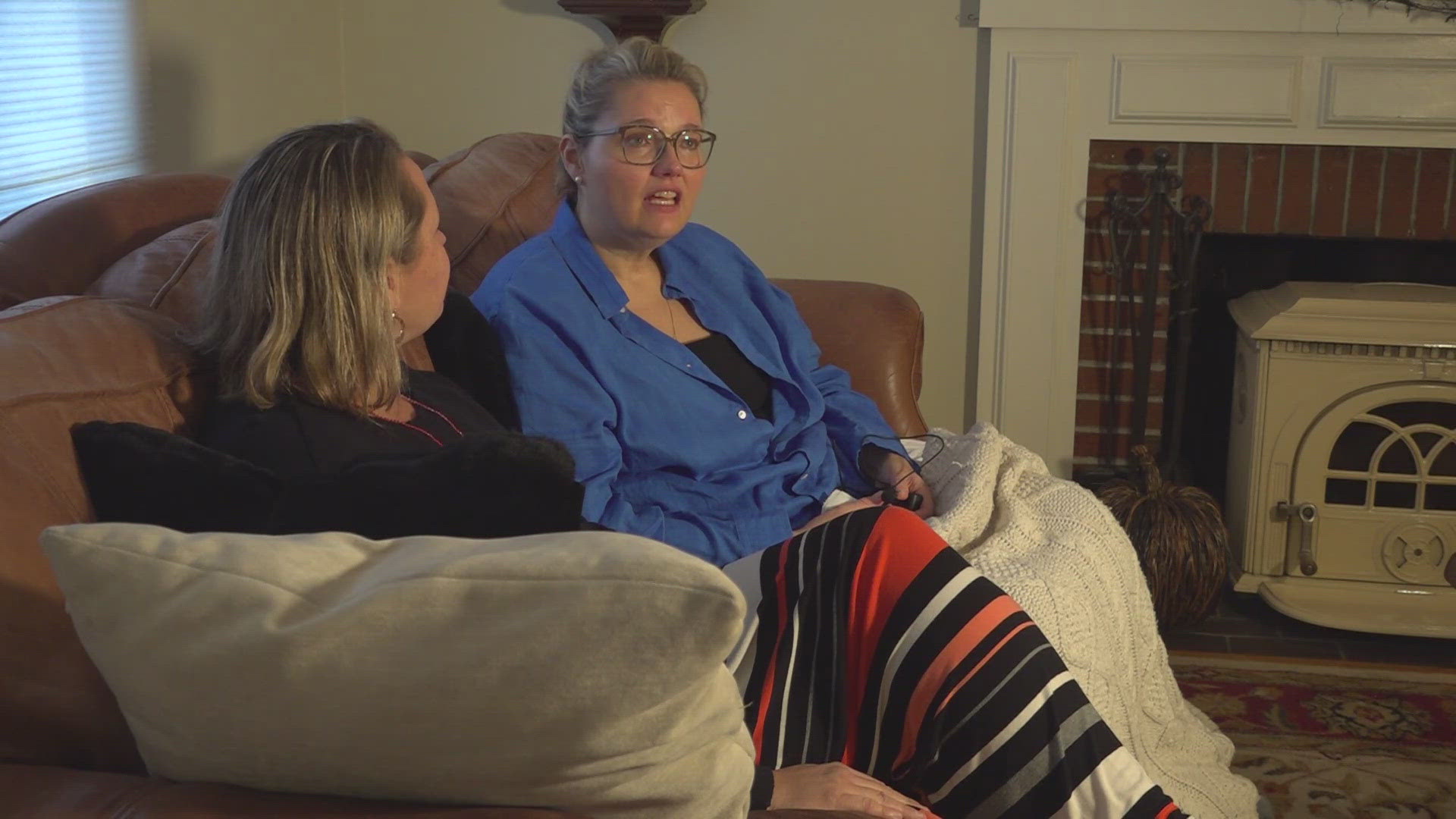SCARBOROUGH, Maine — All their lives, since posing in pretty dresses and big round hats as little girls, sisters Kristen Stover and Amanda Werkle have been Frick and Frack. But Amanda's declining health leaves her and Kristen in constant worry.
Amanda was diagnosed with end-stage liver disease in January of 2023. She said life has been a rollercoaster ever since. Amanda survived a five-day coma in February of 2023. Nine months later, her name was added to the national liver transplant waiting list.
Amanda, who lives in Connecticut, said through all of the ups and downs liver disease has caused, her sister Kristen, who lives in Scarborough, has been her rock.
RELATED: As communities grapple with needle waste, advocates say limiting syringe programs is not the answer
"She is everything to me," Amanda said.
Despite four hours of travel standing between them, Kristen has been front and center to support Amanda in any and every way she needs.
Amanda explained Kristen is the first person she calls when she's happy, sad, or overwhelmed. Her older sister always steps in to help. But there's one thing Kristen can't do for Amanda: Kristen can't be Amanda's living liver donor because of an underlying thyroid condition.
To be a match as someone's living liver donor, a person has to be healthy with no underlying conditions and comparable in height and weight to the person who needs a transplant. Amanda is 6 feet and weighs about 200 pounds.
"I need basically a really healthy football player," she said jokingly as both sisters shared a hearty laugh.
Amanda receives care at Yale New Haven Transplant Center in Connecticut, which has a living liver transplant program.
Dr. Ramesh Batra, the program's surgical director, said there are many misconceptions about living liver transplants and living liver donors. He explained the liver is the only visceral organ in the body that can fully regenerate after damage.
That means a healthy and willing liver donor can donate a piece of their liver to someone in need of a transplant, and the donor's liver will fully regenerate itself over time, regrowing to its normal size. The person who receives a liver transplant is able to have restored health after the damaged part of their liver is removed and replaced with a partial liver transplant, Batra explained.
In this way, the donor shares their healthy liver with a person in need without having to donate their full liver, making them a living liver donor.
"Liver disease, different to kidney disease, does not have any dialysis option," Batra said. "If you don't get a liver in time, you may be looking at a poor quality of life. And in certain cases, it ends in a fatality."
Batra explained that as the liver worsens over time, so does a person's health. A liver that is too badly damaged cannot be repaired with a partial liver transplant, he said.
Once a person's health declines too much, they need a full liver transplant. Their life expectancy also shrinks to weeks in worst case scenarios.
Last year, doctors told Amanda she needs a transplant within three years or sooner to have the best chance of surviving.
"I've used one of those years already, so I'm fighting time. It's terrifying," Amanda said through heavy tears. "Sorry. I think people take for granted knowing that they'll be able to have kids or hoping to have kids. Going to their child's or their niece's or their nephew's birthdays, holidays, those are gifts for me. I don't take anything for granted anymore."
Kristen is hoping that someone, no matter where they are in the world, can be her sister's "unicorn."
"If it could all go away with one donation, who wouldn't wish for that?" Kristen said. "That's my wish. Every Christmas, every birthday, every candle I blow out. That's my wish."
Kristen is urging anyone who is willing to become Amanda's living liver donor to fill out a donor questionnaire. Yale New Haven Transplant Center will complete a health evaluation to qualify eligible donors.
Amanda said even if someone is not a match for her, they could be a match for one of the thousands of other people on the transplant list.
To complete the questionnaire and help Amanda and others, click here.

